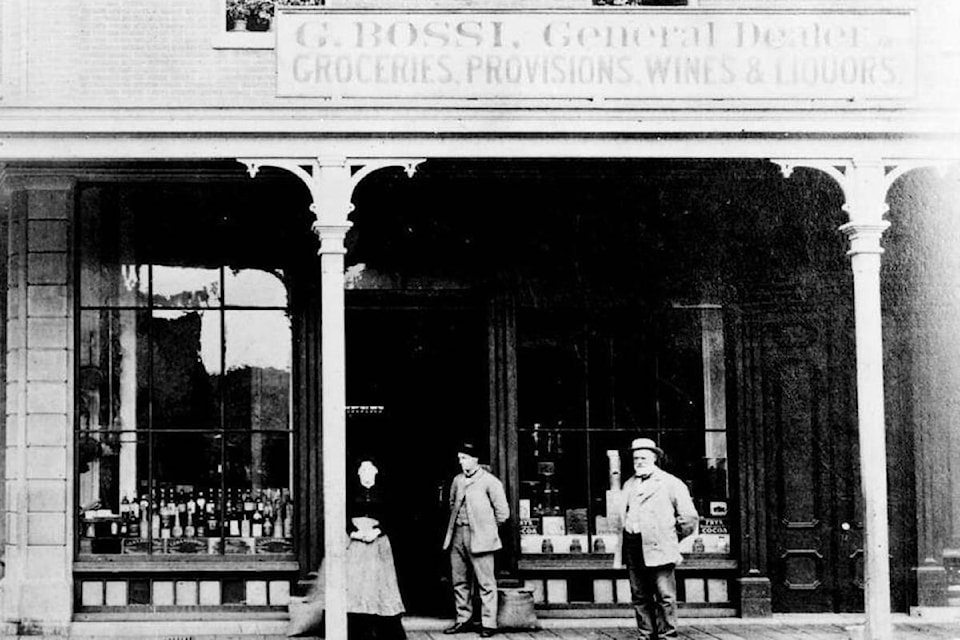A column by Bruce Uzelman
The history of Victoria and the Colony of Vancouver Island are thoroughly linked to James Douglas. The Hudson Bay Company (HBC) instructed Douglas in 1842 to establish a fort there, and assigned him as chief factor. Douglas thus controlled the company’s trade and the governance of the island.
The British Government had granted control of Ruperts Land (lands draining into the Hudson Bay) to the HBC in 1670. The monopoly also gained control of all of the Oregon Territory (present-day British Columbia, Washington, Oregon and Idaho, and parts of Montana and Wyoming) in 1821.
Douglas was born in British Guiana in 1803. He had an unusual ethnic background for someone who would come to exercise so much authority in the nineteenth century. His father was a Scottish merchant. His mother, Martha Anne Ritchie, had African and European heritage.
Young James was sent to school in Scotland, and at age 16 apprenticed with the North West Company. It was absorbed by the HBC in 1821. In 1826, the HBC posted Douglas to Fort St. James, where he married Amelia, the daughter of chief factor William Connolly and his Cree wife.
In 1830, Douglas was assigned to Fort Vancouver, which administered the Oregon Territory. Under the 1846 Oregon Territory Treaty, Britain ceded the territory below the 49th parallel to the United States. The fort was south of the new border. In 1842, the Governor of the HBC, anticipating the treaty, had directed Douglas to construct a new fort and base of operations on Vancouver Island.
When Douglas arrived on the island, he was welcomed by Legwungen Chief Chealthuc, who helped him choose a site. The chief called it Camosack or “rush of water.” The Legwungen became expert carpenters, farmers and transporters for the HBC. The fort was named Fort Victoria.
“Douglas’s mixed blood and that of his wife gave him a more sympathetic view of Indigenous issues than many others in positions of leadership,” states the website, A Country by Consent. Others argue the relationship was fraught. As Douglas applied British law to the Indigenous peoples, there was naturally some resistance, resulting in conflict. Douglas negotiated 14 treaties with Vancouver Island tribes, apparently to defuse disputes and to gain control of land for settlers.
Fort Victoria rapidly became economically successful, as indigenous and international trade grew. By 1845, the fort had 120 acres under cultivation and a sizable livestock farm. Lumbering and coal mining also quickly developed. Victoria grew to be British Columbia’s largest settlement.
In 1849, Britain declared Vancouver Island a Crown colony, but granted the HBC control of the colony for another ten years, in return for the HBC developing and settling it. Douglas in 1851 was appointed governor, and in 1858 governor of the new Colony of (mainland) British Columbia as well.
Everything changed for the small settlement of Victoria in 1858. With the dawn of the Fraser River and the Cariboo Goldrushes, Victoria thrived as the gateway for the thousands of miners arriving by ship, and the supply center for the miners and the new towns along the reaches of the Fraser.
Before the influx of miners, merchants and entrepreneurs, Victoria numbered about 500 people. A few months later, the population had swelled to 5000. B.C. historian Bill Barlee relates that, from the late 1850s to the early 1860s, Victoria was “a wild west town” with races between the express companies on the main street, and riots, muggings, and murders in the center of town.
Even so, by 1862 Victoria boasted a business area with orderly one, two and three story buildings. It soon acquired a cosmopolitan flair with Chinese, American, Canadian, and European residents. The diverse ethnicities and occupations of Victoria’s residents all came to be part of the town’s mix.
Victoria was named capital of the newly united Colony of British Columbia in 1866. It was the seat of government, and home to the many colourful and ambitious early residents who went on to join Victoria’s establishment. These leaders – politicians, professionals, merchants, industrialists and sea captains – built both the economy, and often, elegant mansions. Two of many examples:
Robert Dunsmuir arrived on Vancouver Island in 1851 to manage coal mines. In 1869, he located a rich coal seam, and claimed it. By 1874, the mine was operational. Dunsmuir acquired more coal properties, and he built the Esquimalt and Nanaimo Railway in the mid-1880s. He began to build Craigdarroch Castle in Victoria, fit for a wealthy industrialist. Sadly, he died before it’s completion. His family went on to stage must-attend social events in the castle ballroom.
William Joseph Pendray left his native England, and found himself in the Cariboo gold fields in 1870. He was a partner in an extremely rich mine. He made a fortune, lost it and remade it in the Nevada gold mines. Pendray ended up Victoria, and created a thriving business – manufacturing soap! He bought a lot overlooking the Inner Harbour, and constructed a stunning Queen Anne style mansion.
As for Governor Douglas, he and his wife were well respected, and firmly ensconced in Victoria’s establishment. Sir James Douglas retired in 1864, and was suitably knighted by Queen Victoria.
____
Bruce Uzelman, based in Kelowna, holds interests in British Columbia history as wells as current political and economic issues.
Bruce had a career in small business, primarily restaurant and retail. He holds a Bachelor of Arts, Advanced from the University of Saskatchewan, with Majors in Political Science and Economics.
Contact: urban.general@outlook.com
